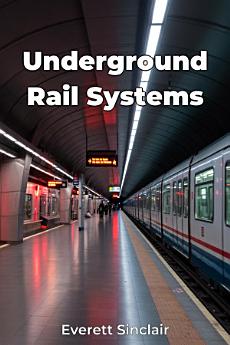Underground Rail Systems
About this ebook
The book begins by introducing the basic principles of subway design and engineering, tracing their evolution to modern automated systems. Subsequent chapters delve into tunnel construction, ventilation, power distribution, and safety protocols. Case studies from cities worldwide, such as New York and Tokyo, provide comparative insights.
This book distinguishes itself by integrating architectural, technological, and operational perspectives, offering a holistic understanding of underground rail systems. The book emphasizes the importance of sustainable urban development and addresses current debates like balancing security with passenger convenience. It showcases how thriving underground rail impacts urban planning, environmental science, and sociology.
The final chapters integrate sustainability, scalability, and future innovation, proposing new design philosophies and technological improvements.








